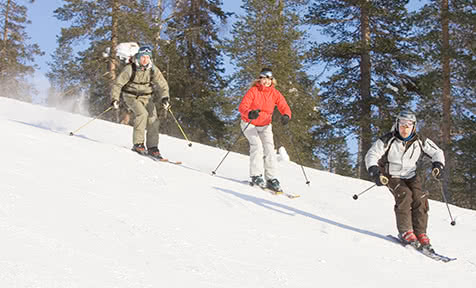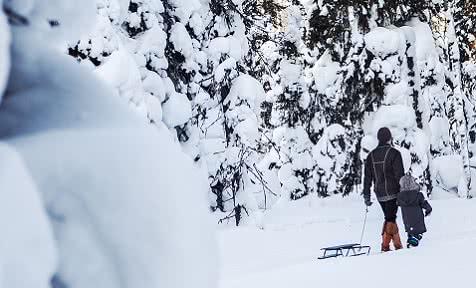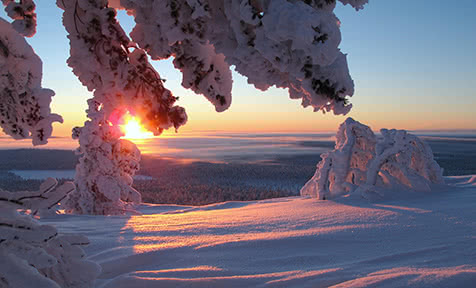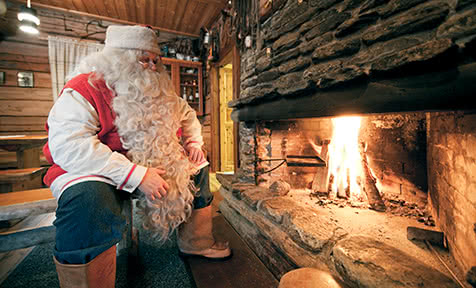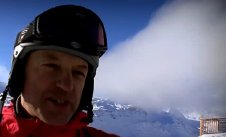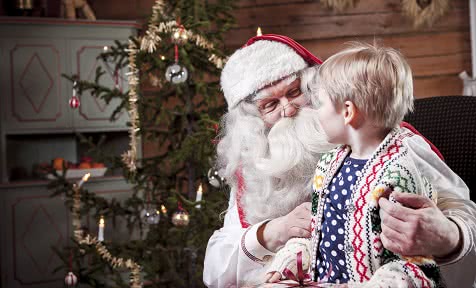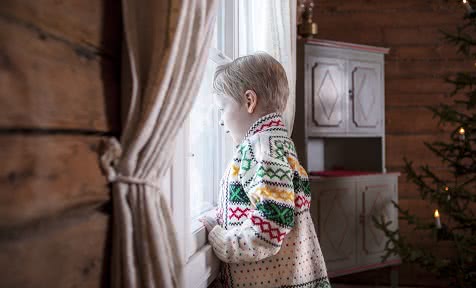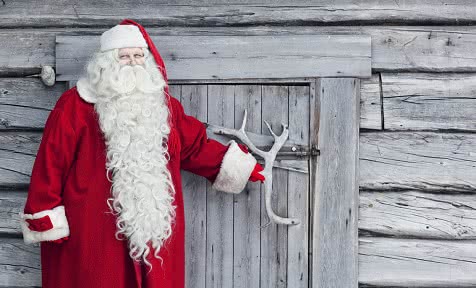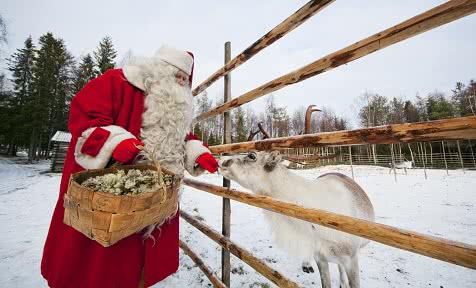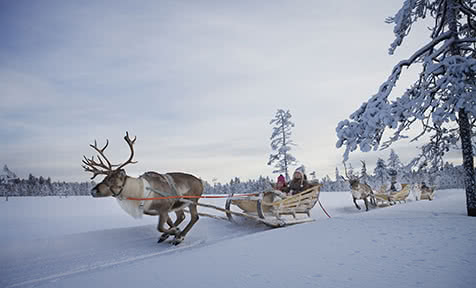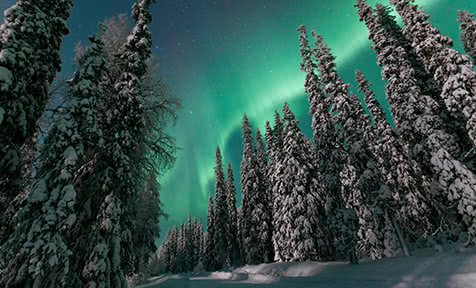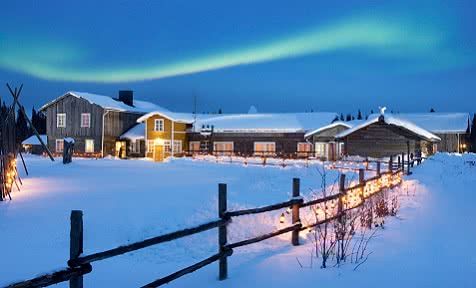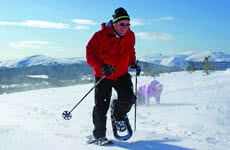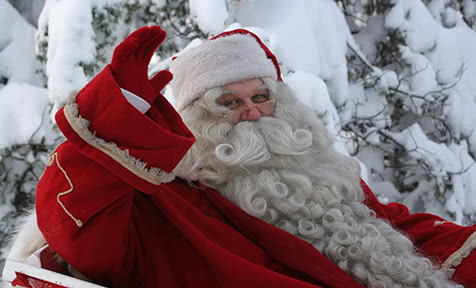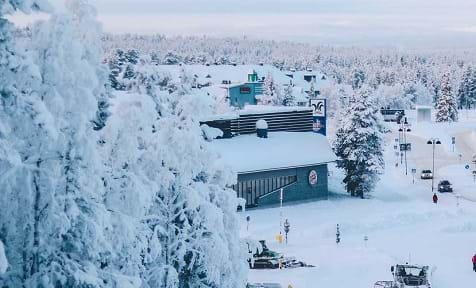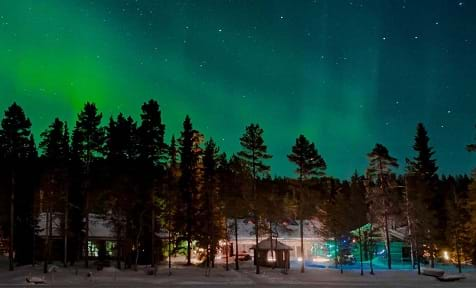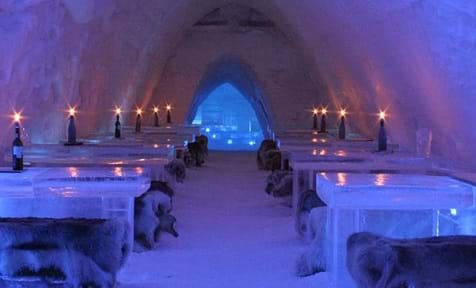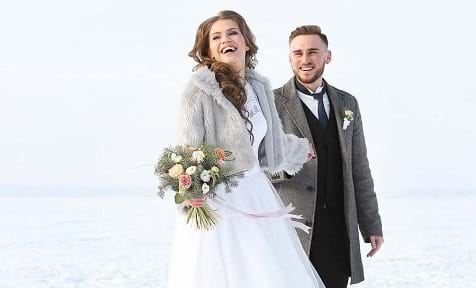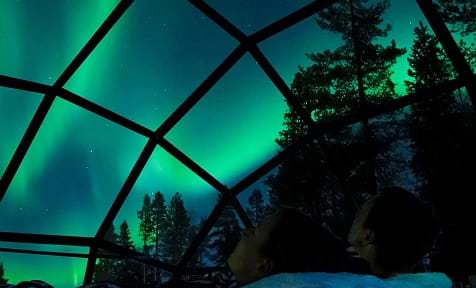There’s something about this jolly old man that sparks wonder in the young and old each Christmastime – and has kept the festive spirit alive for centuries...
Traditions include letter writing, stocking filling and meeting the man himself, but much about Father Christmas is still shrouded in mystery. Here you can read all you need to know about Santa Claus.
with your own travel concierge. Don’t hesitate to drop us a line – we’ll
help plan your perfect Santa Holiday.
020 7770 6888 ← online or call ↴
020 7770 6888
Who is Santa? The history of Father Christmas
Santa Claus is a combination of various historic and legendary characters, whose festive cheer and sense of ‘goodwill to all men’ have merged together over quite literally thousands of years to craft the chap we all know and love today.
Saint Nicholas of Myra is probably the most well-known of these figures and is also the reason we sometimes call Santa ‘Saint Nick’. This famously charitable 4th century bishop is said to have brought gifts to the poor as they slept and there’s a legend of him throwing gold coins into the chimney of three young maidens whose father couldn’t afford a dowry. If you always look forward to your own small fortune of chocolate coins in the foot of your Christmas stocking, you’ve got Saint Nicholas to thank – the coins are fabled to have landed in the maiden’s stockings that were drying by the fire, with the women discovering their gift the following morning – much like we do now!
The god Odin in Norse mythology also appears to have influenced our idea of the modern Santa Claus. Odin’s traditionally illustrated with a great flowing cloak and tremendous white beard (Tolkien fans might know him as the inspiration for Gandalf!). With his eight-legged steed, Sleipnir, he was believed to have soared through the skies during midwinter nights – visiting the needy with presents. Sleipnir has since been replaced by reindeer but the legendary facial hair of the gift-bringer of the North remains…
Aside from his gift-giving, the resounding bursts of “Ho Ho Ho!” and an infectiously jolly manner are the most recognisable traits of this jolly man in red. The Tudor figure of Father Christmas is certainly at the root of this, created as a means of encouraging peace, joy and – of course – avid feasting! Father Christmas experienced a revival during the Victorian era where he also became the symbol of festive cheer and is now the UK equivalent of Santa Claus, bringing presents to the nation on the night of the 24th of December.
Santa’s Helpers
Behind Santa’s success is a dedicated team of assistants, including his wife Mrs Claus, trusty elves and 9 reindeer.
Mrs Claus is a grandmotherly character, with snowy white hair and a fantastic sense of Christmas spirit, which she shares with her husband. In their cosy woodland grotto, a tremendous fire is kept roaring and they feast upon freshly-baked cookies whipped up by the elves that very afternoon. Mrs Claus loves the Reindeer Games and training the athletes for races as well as their annual round-the-world mission.
The elves are central in ensuring that Christmas is planned and carried out with absolute precision. Elves are remarkably skilled creatures who can operate multiple tools at the same time – meaning they can put together thousands of toys a day in Santa’s workshop! As well as some extremely productive builders, the workshop has its own design team who draft sketches of the next best toys. Some elves are also specially selected for the maintenance of Santa’s sleigh – a very important job as it has to be in flawless working order to guarantee every child receives their presents in time!
Some say the reindeer pulling Santa’s sleigh get their powers of flight from a diet of magical lichen, found growing in an enchanted forest which surrounds the grotto. Santa has 9 reindeer who join him on Christmas Eve, and their names can be found in Clement Clarke Moore’s 1823 poem ‘A Visit From St. Nicholas’ – except Rudolph who was recruited much later in 1939. The reindeer have been trained from when they were tiny to take part in Santa’s worldwide journey, but really look forward to the little gifts of food that children leave for them (particularly carrots, or oats sprinkled on the driveway!). If you’d like to know a little more about Santa Claus’ fantastic fleet, you can read all about Santa's reindeer.
Where does Santa live – North Pole or Lapland?
The true location of Santa’s home and workshop is one of Christmas’ greatest mysteries, with the main debate concentrating on whether he can be found in the remote wonderland of the North Pole, or tucked away in a cabin among the pines of Finnish Lapland.
The real North Pole is as much contested as Santa’s home is in the first place! Canadians believe that Santa’s village is located under the postcode H0H 0H0 (making it somewhere around Montreal), whilst there’s the town of North Pole in Alaska, too. Visitors to the town can meet the ‘genuine’ Santa at Santa Claus House - the nearby Wendy’s even has a sleigh-thru! The myth surrounding the North Pole is most likely down to Thomas Nast – a political cartoonist for Harper’s Weekly who produced festive sketches during the 19th century. Nast’s drawing of children tracing Santa’s route between the North Pole and the rest of the world introduced this idea to the American public; he also did an image of a little girl posting her Christmas list to ‘St. Claus, North Pole.’
Since the idea of Santa Claus was introduced from Europe (and reindeer are known only as caribou in North America!), it’s a pretty convincing case that the Real Deal has his home this side of the Atlantic. Most of us tend to think of Santa and Mrs Claus sharing a cosy grotto in Lapland – kept company by his reindeer and trusty elves and hidden from civilisation by dense forest and miles of glittering snow.
Facts about Santa
- The world’s first Santa’s Grotto was opened in 1879 in Lewis’s department store, Liverpool. The grotto was named ‘Christmas Fairyland’ and hosted many generations’ first meetings with Santa Claus.
- Much of our image of Santa Claus is actually based upon Clement Clarke Moore’s 1823 poem ‘A Visit from St Nicholas’. Santa’s sleigh landing on the rooftops, his entrance down the chimney and sack full of toys were all thought up by the poet, but have now become some of his most famous features!
- You might have heard that Coca-Cola manipulated Santa’s suit for an advertising campaign, turning it from green to red so that it matched the company’s colours... This is in fact a myth! Though it’s true that Santa Claus had mostly been depicted in green robes before the campaign, Christmas cards with a red-attired Santa were in circulation almost 40 years before Haddon Sundbloom came up with his iconic image in 1931.
- The name ‘Santa Claus’ is not to be confused with ‘Sinterklaas’ – who appears on the 5th of December to deliver presents in the Netherlands and Belgium. When Dutch people came to settle in New Amsterdam (modern-day New York), the name changed and eventually came to signify the gift-bringer of Christmas Eve.
- According to the world’s time zones, Santa Claus has approximately 32 hours to deliver all of his presents. He also has to travel a total distance of 510,000,000km and maintain an average speed of 1800 miles per second… that’s 167 times quicker than the Voyager 1 space probe – the fastest manmade object ever made!






